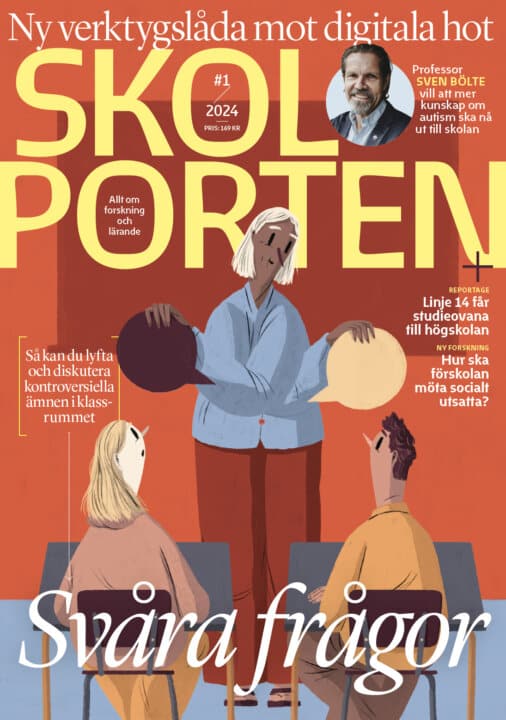Bullying, violence and mental distress among young people. Cross-sectional population-based studies in Scania, Sweden.
Elever med funktionsnedsättning har sämre hälsa och är ungefär dubbelt så ofta mobbade och nättrakasserade än klasskamrater utan funktionsnedsättning, visar Maria Fridh i sin forskning.
Maria Fridh
Maria Rosvall, Lunds universitet Martin Lindström, Lunds universitet
Professor Anne Hammarström, Uppsala universitet
Lunds universtitet
2018-06-01
Bullying, violence and mental distress among young people. Cross-sectional population-based studies in Scania, Sweden.
Bullying, violence and mental distress among young people. Cross-sectional population-based studies in Scania, Sweden.
The overall aim was to investigate associations between bullying, violence and mental health among young people in Sweden. Specific aims were to investigate differences in exposure to peer victimization among disabled and non-disabled adolescents (Paper I), the influence of social support on the relationship between cyber harassment and mental distress among adolescents (Paper II), the association between exposure to physical violence and mental distress among young adults (Paper IV), and furthermore to investigate associations between involvement in different cyberbullying roles and self-injury among mentally distressed adolescents (Paper III). Method: Cross-sectional data from the public health surveys in Scania 2008, 2012, and 2016 was used. Logistic regression analysis was the primary method. Paper I (n=7533), Paper II (n=8544) and Paper IV (n=5929) were population-based studies while Paper III investigated self-injury in a study sample of mentally distressed students (n=6841). Results: Paper I: Among 9th grade students in 2012 more boys (24%) than girls (22%) reported some type of disability. Disabled students reported poorer health and were twice as often exposed to traditional bullying and cyber harassment than non-disabled peers. A difference in gender pattern was seen among disabled bullied adolescents as girls had the highest levels of psychological symptoms and boys the highest levels of somatic symptoms. Across six disability groups, students with ADHD/ADD reported the highest levels of mental distress and were also the most often bullied. Paper II: Among 9th grade students in 2012 more girls (20 %) than boys (14%) had been cyber harassed past year. Cyber harassment was associated with higher levels of subjective health complaints with stronger associations for victimization several times than once. Support from parents and friends (measured as easy communication) had a generally beneficial (main) effect for boys and girls, while indications of a stress-buffering effect of parental and friend support were seen among boys only. Paper III: Among adolescents (students in 9th grade compulsory school and 2nd grade upper secondary school in 2016) who affirmed broadly defined mental distress at least 2 weeks in a row past year (33 % of boys and 63 % of girls), past year self-injury was admitted by 12 % of boys and 26 % of girls. Associations between past year self-injury and cyberbullying were increasingly stronger in the order of: bullies; victims; to bully-victims. Statistical significance was lost among male cyberbullies after adjustment for risky life-style (alcohol, smoking, narcotics). Paper IV: Among young adults 18-34 years of age in 2008, exposure to physical violence was twice as often reported by men (10 %) than women (5 %). Mental distress past few weeks was more prevalent among women (28 %) than men (19 %), but while victimized women showed more than doubled odds of mental distress compared with non-exposed women, this pattern was not seen among men. The association found among women was attenuated but remained significant after multiple adjustments. In general men were most often violated in public places while women were most often violated at home. Conclusion: Reducing violence would be beneficial to mental health among young people in Sweden. Interventions focusing on the mechanisms behind peer victimization, aiming at improving the quality of peer and family relationships, might reduce the incidence of peer victimization both in school and online and reduce the level of mental distress. It is vital that those who are still victimized receive adequate help.
Relaterade länkar

Fritidshem
 Åk F–6
Åk F–6 Matematikångest
 Åk 4–Vux
Åk 4–Vux 






